By GABE STUTMAN gabe@kodiakdailymirror.com | 0 comments
The Alaska Aerospace Corporation is undertaking a new environmental impact study in order to increase launch capacity at the Pacific Spaceport Complex, according to CEO Craig Campbell.
Under the current Launch Site Operator License with the Federal Aviation Administration, the spaceport can accommodate up to nine rockets over a twelve month period. Campbell said he’d like to see the number increased to 24, which would include government-affiliated launches as well as commercial launches with smaller payloads.
“We’ve been launching larger rockets, Minotaur-sized, Polaris-sized rockets,” he said. “Now we’re launching smaller rockets.”
Since 1998, the spaceport has facilitated 19 launches, all affiliated with the U.S. government, most either with the U.S. Missile Defense Agency or the U.S. Air Force. This year, it will begin facilitating commercial space flights with smaller payloads, like from the Arizona-based Vector Launch, Inc., one of the companies contracted to use the spaceport later this year. Vector specializes in launching what are called nanosatellites, like the PocketQube – manufactured by Scottish company Alba Orbital – which weigh about two pounds.
“We’re basically asking the FAA to allow us to increase the number of launches at Kodiak,” Campbell said, “based on the smaller rockets operating there.”
The request for information released by the AAC on March 2 is for market research to identify the company that will perform the new Environmental Assessment. The EA will be submitted to regulators and will take into account factors such as impacts on wildlife, water pollution and noise in consideration of the new launch limits. The AAC is hoping for a Finding of No Significant Impact, or FONSI, which would allow it to proceed with the licensure change.
Campbell said that the AAC may re-use its previous contractor, Anchorage-based R&M Consultants. Once the company is identified, it will take around one year to complete the assessment.
The push for additional launch capacity is just one way the company has been looking to generate new sources of revenue since losing state funding in 2014.
In November, the company created a subsidiary called Aurora Launch Services to operate in the private sector. And on Monday, Campbell said that a $250,000 Environmental Assessment was underway for a new launch site in Hawaii.
“If it is a good site, and the EA appears successful, we will begin looking for funding to build the facility in Hawaii with Alaska Aerospace as the lead company,” Campbell said during a board meeting on November 2, after receiving approval from the Hawaii Legislature that it would fund the EA.
He said the company is currently working with the University of Hawaii and the state department of economic development to research a potential site for small commercial launch vehicles.
Another site considered a backup to Hawaii during the November board meeting was Saipan, a U.S. territory northeast of Guam.
“If Hawaii fails, we need an alternative that is affordable,” he said.
The AAC is also looking at developing a fifth launch pad at the Kodiak spaceport.
Campbell said an unnamed company has expressed interest in having a launch pad reserved for its exclusive use.
“They could lease their own land and have a designated pad,” he said, adding that Alaska Aerospace would review any engineering involved.
He said the company would launch low-intensity, small rockets from the pad. He could not name the company, as the agreement had not been finalized.
